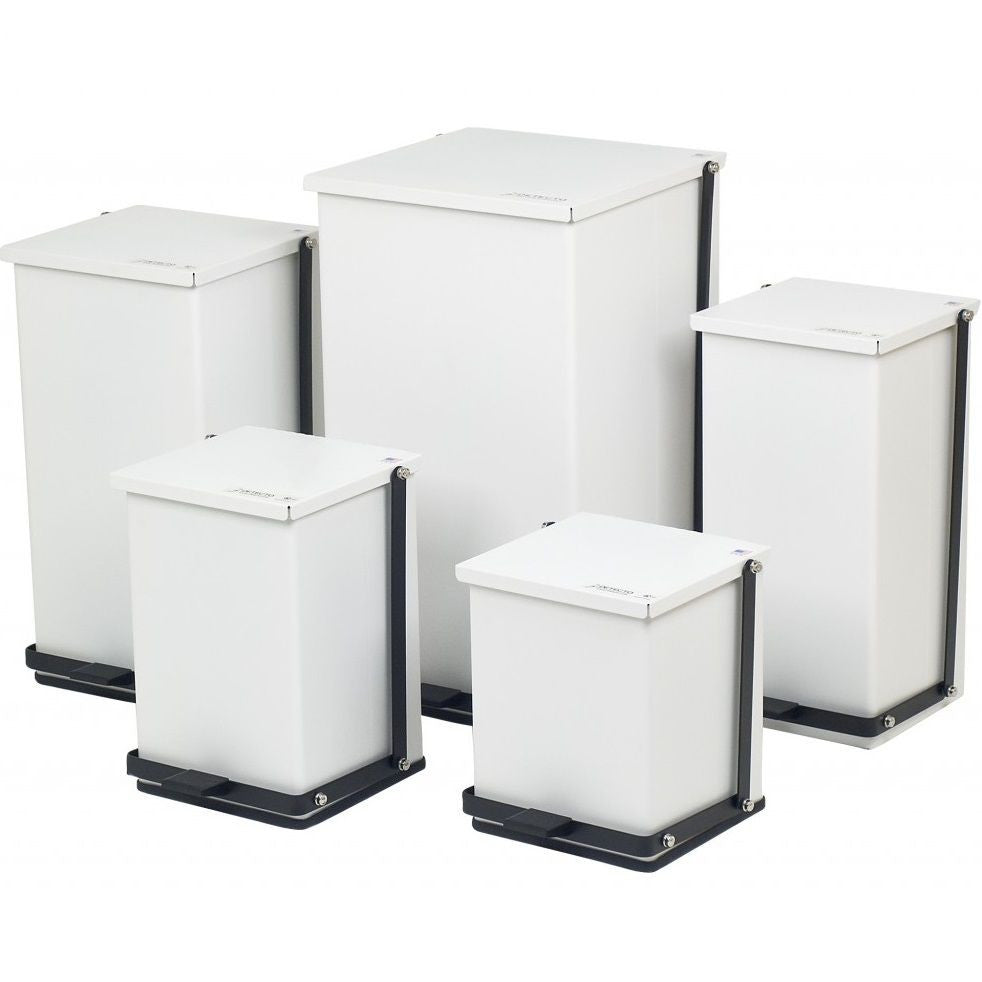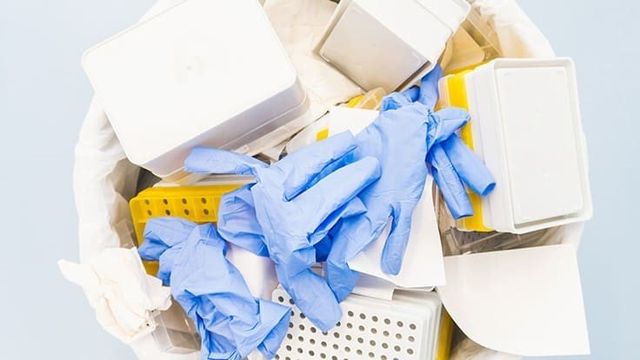Community Care: Seamless and Reliable Medical Waste Removal Near Me
Community Care: Seamless and Reliable Medical Waste Removal Near Me
Blog Article
Minimize Prices and Make Best Use Of Safety And Security: Effective Medical Waste Disposal Approaches
Efficient medical waste disposal approaches are critical for health care centers to lessen prices and maximize safety and security. By carrying out proper segregation and categorization, reliable product packaging and labeling, risk-free transportation and handling, effective treatment and disposal techniques, and conformity with regulatory guidelines, healthcare centers can guarantee the liable and risk-free monitoring of medical waste.

Appropriate Segregation and Classification
Correct segregation and categorization are critical elements of efficient clinical garbage disposal approaches, making certain the safety and security of healthcare employees, the general public, and the setting - medical waste removal services. medical waste disposal services with WasteX. By separating various sorts of medical waste at the point of generation, healthcare centers can minimize the danger of cross-contamination and potential harm to people and ecological communities
One of the essential consider appropriate segregation is the recognition and classification of medical waste. This includes classifying waste right into different teams, such as contagious, hazardous, radioactive, or pharmaceutical waste. Each group calls for particular handling, storage space, and disposal methods to stop any kind of adverse impacts on human health and the environment.
In addition, proper partition also includes making use of color-coded containers and labels to clearly determine and distinguish the various types of clinical waste. This helps medical care workers and waste management employees to conveniently recognize and deal with the waste suitably. Red containers might be used for infectious waste, while yellow containers might be marked for hazardous waste.
Along with segregation, correct categorization likewise involves the right product packaging and control of medical waste. This makes sure that waste is firmly kept and transferred without posturing any type of risks to people or the setting. Utilizing puncture-resistant and watertight containers, as well as effectively securing and labeling them, helps to stop any unintentional direct exposure or launch of hazardous materials.
Efficient Packaging and Labeling
Reliable packaging and labeling play a crucial function in guaranteeing the reliable and safe disposal of clinical waste. Appropriate product packaging is crucial to avoid leakage, damage, or spillage throughout transport and handling. It aids to decrease the risk of contamination and protects health care workers, waste management workers, and the setting from potential risks.
Medical waste should be packaged in tough and watertight containers that are immune to penetrate and breakage. These containers ought to be properly secured to stop any kind of leakage. Additionally, the product packaging ought to be able to hold up against the conditions of transport, consisting of temperature variants and misuse.
Labeling is equally important as it gives critical info regarding the contents of the waste and any prospective dangers related to it. The labels need to include the name of the health care center, the sort of waste, and any kind of special delivery instructions. Standardized and clear labeling ensures that waste administration workers can quickly identify and manage the waste properly.
Reliable packaging and labeling also aid in the appropriate segregation and classification of medical waste. Clear labeling permits very easy recognition of different waste streams, such as transmittable waste, sharps, or pharmaceutical waste. This assists in simplifying the disposal procedure and making certain that the waste is treated or thrown away based on governing guidelines.
Safe Transportation and Handling
Making certain the secure transportation and handling of clinical waste is of utmost importance in order to avoid any type of possible health and wellness and ecological threats. Medical waste, such as sharps, infected products, and pharmaceutical waste, must be effectively packaged and dealt with to reduce the danger of exposure to damaging materials and virus.
Carrying clinical waste calls for compliance with stringent policies and guidelines set by environmental companies and local authorities. These laws intend to protect the health and wellness of workers associated with waste management and prevent the release of dangerous materials right into the environment.
To guarantee safe transport, medical waste should be placed in leak-proof and puncture-resistant containers that are appropriately secured and labeled. Additionally, it is essential to use specific cars outfitted with ideal security functions to transport clinical waste. medical waste disposal services with WasteX.
Taking care of clinical waste also requires appropriate training and adherence to security procedures. Workers included in the handling of medical waste should wear suitable personal safety tools (PPE) such as dress, gloves, and masks to lessen the risk of exposure. They need to also adhere to stringent hygiene techniques to avoid the spread of infections and guarantee the safe disposal of waste.
Reliable Treatment and Disposal Methods
Executing suitable therapy and disposal techniques is vital in taking care of clinical waste effectively and decreasing prospective health and ecological dangers. Medical waste, which includes sharps, transmittable materials, chemicals, and pharmaceuticals, can present significant dangers otherwise managed and dealt with properly. There are numerous therapy and disposal techniques offered that adhere to regulative standards and promote secure methods.
One typical approach is incineration, which entails melting the waste at heats. Incineration is efficient in destroying virus and decreasing the quantity of waste, however it can release dangerous pollutants into the air otherwise properly controlled. It is vital to utilize modern burners furnished with exhaust control innovations.
Another method is autoclaving, which uses heavy steam and pressure to sanitize the waste. Autoclaving is reliable in eliminating microorganisms and minimizing the quantity of waste, yet it requires cautious surveillance and maintenance to ensure correct functioning. The sterilized waste can after that be safely disposed of in a garbage dump.
Chemical therapy is one more choice, which includes using anti-bacterials or various other chemicals to reduce the effects of microorganisms. This technique is frequently made use of for liquid waste, such as laboratory specimens. However, it is important to make use of appropriate chemicals and comply with proper procedures to make certain effective treatment and stop environmental contamination.

Conformity With Regulatory Guidelines
Sticking to regulatory standards is important in making certain appropriate conformity with clinical garbage disposal techniques. These guidelines are established to shield public health, prevent ecological contamination, and preserve office safety and security. Conformity with regulatory standards is vital for healthcare facilities, as non-compliance can cause penalties, penalties, and reputational damage.
Regulative guidelines detail the correct handling, storage, transport, and disposal of clinical waste. These standards also resolve the segregation of different waste streams, such as sharps, infectious waste, and pharmaceutical waste.
To preserve conformity, health care centers should develop thorough waste management programs that consist of staff training, routine audits, and continuous monitoring. It is necessary to keep up-to-date with any type of modifications or this page updates to regulatory standards, as practices may advance over time. By remaining informed and implementing correct methods, medical care facilities can lower the possibility for regulative infractions and protect the health and wellness of their team, people, and the surrounding neighborhood.
Verdict
In conclusion, applying effective this content clinical garbage disposal strategies is critical for minimizing costs and taking full advantage of safety and security. Appropriate partition and classification, reliable product packaging and labeling, risk-free transportation and handling, and efficient treatment and disposal approaches are vital actions to ensure compliance with regulatory standards. medical waste removal service. By adhering to these approaches, health care facilities can protect the environment and public health and wellness while also lowering economic concerns connected with clinical waste monitoring
By implementing appropriate segregation and classification, effective packaging and labeling, risk-free transport and handling, effective treatment and disposal approaches, and compliance with governing guidelines, healthcare facilities can make certain the liable and secure management of medical waste. Red containers may be made use of for infectious waste, while yellow containers might be marked for hazardous waste.
Clear and standardized labeling makes sure that waste monitoring employees can easily identify and deal with the waste properly. (medical waste disposal services with WasteX)
Clear labeling enables for easy identification of various waste streams, such as contagious waste, sharps, or pharmaceutical waste. These guidelines also my latest blog post address the partition of different waste streams, such as sharps, infectious waste, and pharmaceutical waste.
Report this page